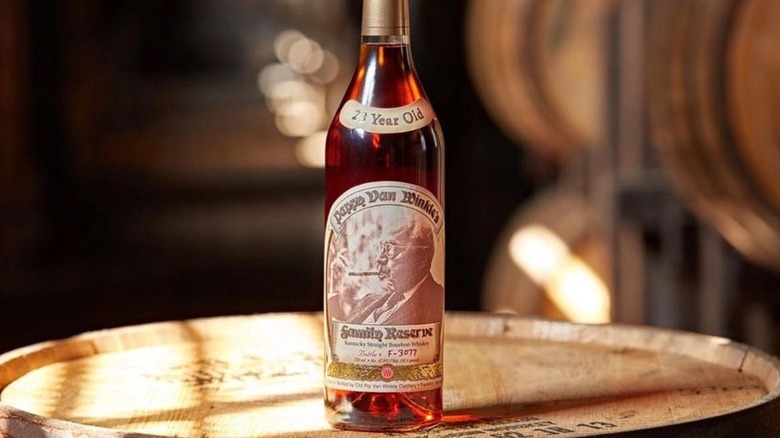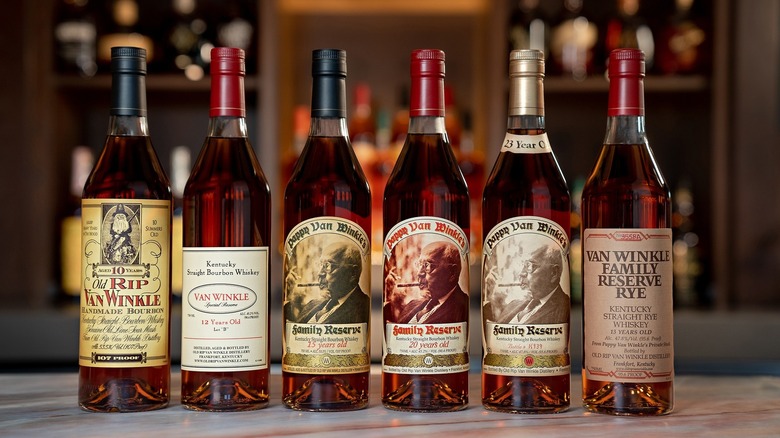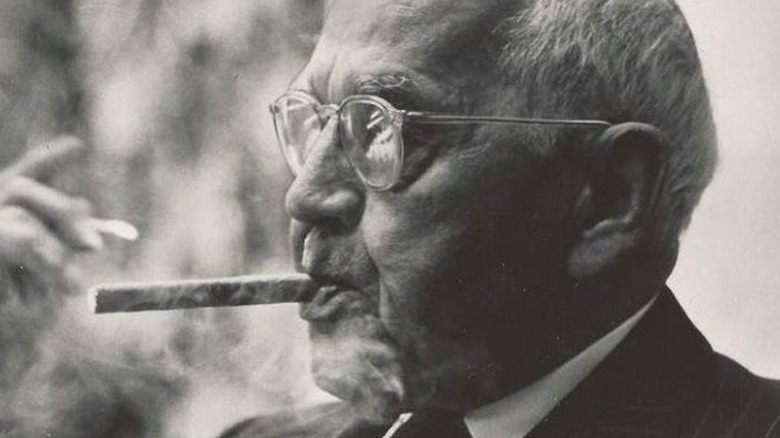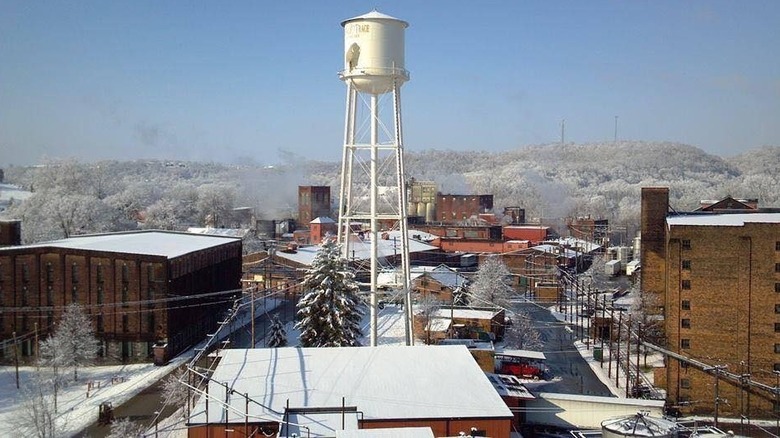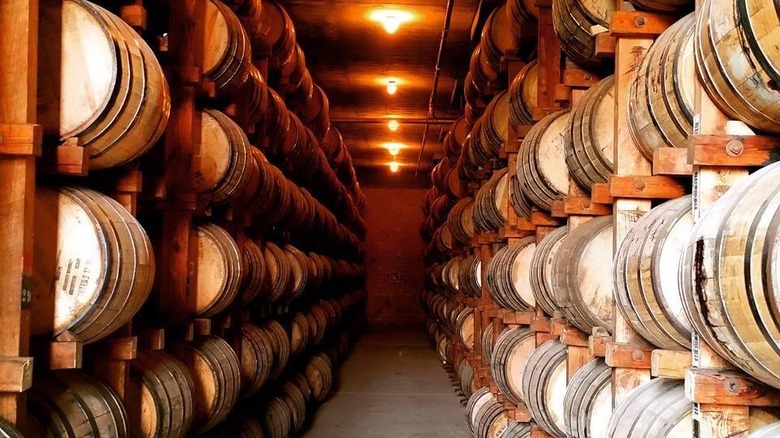Why Is Pappy Van Winkle So Expensive?
Even if you don't know much about bourbon whiskey, you probably know the name Pappy Van Winkle. It has become something of a cult among collectors and aficionados of the classic American spirit. But why is Pappy so expensive? One might as well ask why Ferraris are so expensive, or why bottles of Screaming Eagle, the long-time king of California cult wines, consistently fetch such exorbitant prices.
The answer is quite simple in purely economic terms. This is what happens when limited supply meets very high demand. It's the scarcity principle in action. For supply and demand to reach an equilibrium, The Business Professor explains, the scarcity principle dictates that the price of a rare product be increased until only a favored few can afford the limited offerings available. You can ultimately get some of the best bourbons for under $50, but an occasional splurge is always worth the fun.
It's an excellent explanation for how some products become outlandishly expensive, but it does little to explain what it is about these products that so utterly captured the imagination of consumers in the first place. In the case of Pappy Van Winkle, the backstory is as much a part of the allure as the well-aged liquor in those notoriously hard to find bottles.
What is Pappy Van Winkle?
Before we dive deeper into Kentucky bourbon history, let's first establish exactly what the Pappy brand entails. As Wine Enthusiast notes, when we talk about Pappy Van Winkle, we're really only talking about three products: Pappy Van Winkle's Family Reserve bourbons aged 15, 20 and 23 years. The 20-year-old was first launched in 1994, the 23-year-old in 1998, and the 15-year-old in 2004.
The bourbons are named for Julian "Pappy" Van Winkle Sr., a founder and long-time president of Stitzel-Weller Distillery in Shively, Kentucky, until his death in 1965 (via The New York Times). The Old Rip Van Winkle brand, created by Pappy, was kept alive by his son Julian Van Winkle Jr. after Stitzel-Weller was sold in 1972 (it's now closed), and Julian Van Winkle III added to the portfolio after his father's death in 1981.
At that time, Old Rip Van Winkle was only available in 10-year-old 90- and 107-proof bourbons. It was Julian Van Winkle III who introduced the now-legendary Pappy Van Winkle Family Reserve bourbons, which, since 2002, have been made in a joint venture with Buffalo Trace Distillery in Frankfort, Kentucky. A 12-year-old Van Winkle Special Reserve and 13-year-old Van Winkle Family Reserve Rye have since been added to the collection (via Buffalo Trace Distillery).
Pappy history and legend
All bourbon is at least 51% corn by law, but Pappy Van Winkle is known for using wheat and barley rather than rye, putting it in the category of what are known as wheated bourbons (via Men's Journal). This is an important distinction, with historical roots dating back to Julian Van Winkle Sr.'s days as a traveling liquor salesman for W.L. Weller and Sons, when the Old Rip Van Winkle brand was first developed. He and another top salesman ultimately bought the company in 1915, per Imbibe.
Weller and Stitzel did business together, and soon Pappy was president at Stitzel, guiding the company and the Old Rip Van Winkle brand through the depths of Prohibition, which wasn't so bad at Stitzel, since they had one of six distiller permits, per Wine Enthusiast, to continue making "medicinal" whiskey during the nationwide dry spell. Stitzel-Weller was born on Kentucky Derby day in 1935, and for years was the only U.S. distiller of note to make wheated bourbons.
We say U.S. distiller, and indeed it's legal to make bourbon anywhere in the U.S. But 95% of all bourbon is made in Kentucky, per LuxRow Distillers, and indeed the two names, bourbon and Kentucky, are practically synonymous. Kentucky's storied bourbon history is an important ingredient in the history and legend of Pappy Van Winkle, because the career of its founder, who was born in Louisville in 1874, is as Kentucky as it gets.
The birth of a cult
After launching the world's first 20-year-old bourbon in 1994, Julian Van Winkle III began marketing it to the world's top tasters. In 1996, the Beverage Tasting Institute awarded it a 99, which Imbibe describes "as an unprecedented rating for a domestic whiskey." Two yearrs later, Pappy scored another 99, this time at the World Spirits Championships (via Wine Enthusiast). The cult was growing.
Between 2000 and 2010, Pappy Van Winkle's selling price gradually increased, edging upwards from about $125 to $200 retail for the 23-year-old whiskey, per Imbibe. But "by the 2010s, Pappy would be a veritable 'unicorn,'" notes Vine Pair. Buying shots at a bar could cost hundreds of dollars, and bottles began bringing enormous prices at auction. Even empty bottles had suddenly become desirable, fetching higher prices than many full bottles of bourbon (via Straigtht Bourbon). But were the empties meant as souvenirs or as packaging for counterfeits?
Pappy only grew as a pop culture phenomenon in 2013, when the theft of half a million dollars worth of bourbon took place at the Buffalo Trace Distillery, a crime detailed in the 2021 Netflix documentary "Heist" (via Go Bourbon). Nowadays, the bourbon remains as hard to find as ever, and since most retail outlets receive their allotment by the bottle rather than by the case (the actual production levels of Pappy Van Winkle are not released), many liquor stores are now auctioning them off for charity, per Eastport Liquors.
Riding the Bourbon Wave
Bourbon as a consumer product has seen enormous peaks and valleys. For decades, starting in the 1960s, it was in the valley phase, as the unforeseen popularity of vodka had tanked its demand. But for the past decade plus, bourbon has been in a peak phase unlike any it has seen before (via Imbibe).
The most interesting part of the current bourbon boom has been the intense interest and collector-like mania for certain brands. About a decade ago, Imbibe observes, a new breed of bourbon consumer appeared on the scene, seeking out very specific brands, and willing to buy out the entire stock of these brands at liquor stores. "Who or what was behind this mysterious behavior became the subject of wide-ranging speculation and debate. But one name frequently came up," the outlet explains. You guessed it: Pappy Van Winkle.
Pappy Van Winkle isn't just riding the bourbon wave; it helped to create it. The only question now is: how much higher can its prices go? It's already amongst the most expensive bottles of bourbon.
